I CAN’T resist visiting the ford near Warren House Plantation to see what flowers have bloomed since our last visit and on the way there we pass the old Warren House, a large building that was the farmhouse and farm buildings all in one. The ancient Germanic people built what they called ‘longhouses’ that had the humans living at one end and the farm animals at the other.
If my memory serves me correctly the buildings have been vacant and disused for at least sixty years and I cannot understand why the people who own this property do not sell it as a rich man’s ‘hideaway’ home or something.
Anyway, back to the ford where there were lots of golden rod flowers out in bloom on the hedges. As their name suggests they have yellow flowers all the way up a tall stem. The plant had a great reputation for healing wounds during the 17th-century, so became highly sought after and therefore expensive until it was found to be growing in the wild.

Having a close look around the hedges and banks near the ford I found a poplar hawk–moth at rest on some vegetation. Hawk–moths are among our most impressive moths because of their size and there are eleven different species in the country. This one favours damp woodland beside running water and usually flies by night and, as I found, they rest in the open during the daytime. Indeed, we were there for more than an hour and just before we left, I noticed it was still resting.
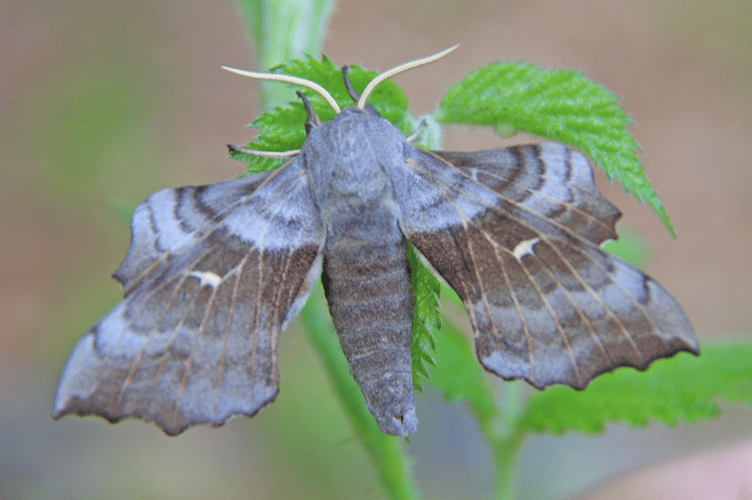
I photographed a southern hawker dragonfly near the stream where it was patrolling to and fro above the water, catching any flying insects including small butterflies. These dragonflies are very territorial and males aggressively defend their feeding areas by aerial combat.
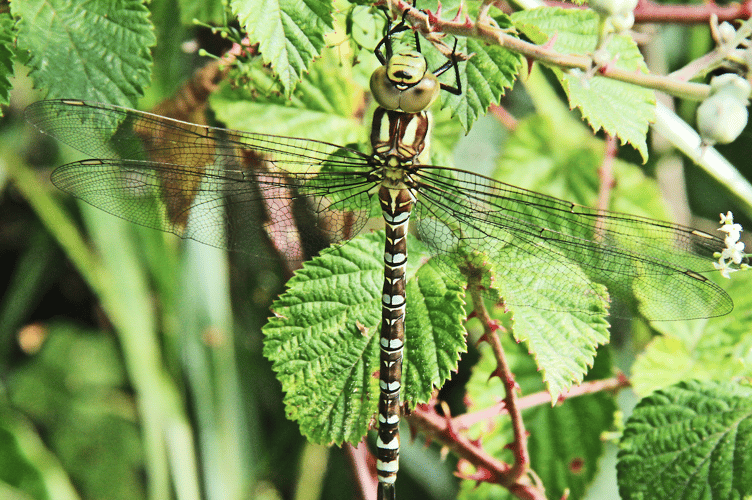
On the way home we stopped to photograph some white Russian vine flowers that were growing wild on the hedgerow. Now, this shrub has such a reputation for aggressive growing that it has earned the name ‘Mile a minute shrub’, as anyone who has one growing in their garden will know.
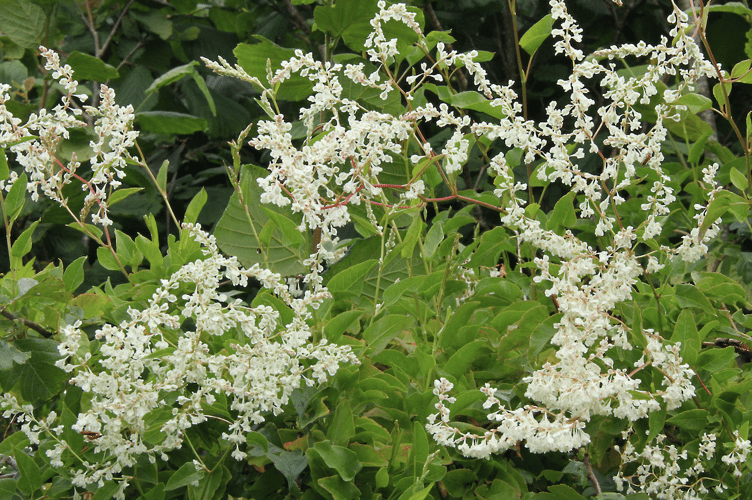
The next day, I took a walk to see what was growing out near the Premier Inn and was delighted to see the seeds of a thistle were taking off in the wind with their white, hairy parachutes. This is the thistle’s way of making sure its seeds are carried far away on the wind.
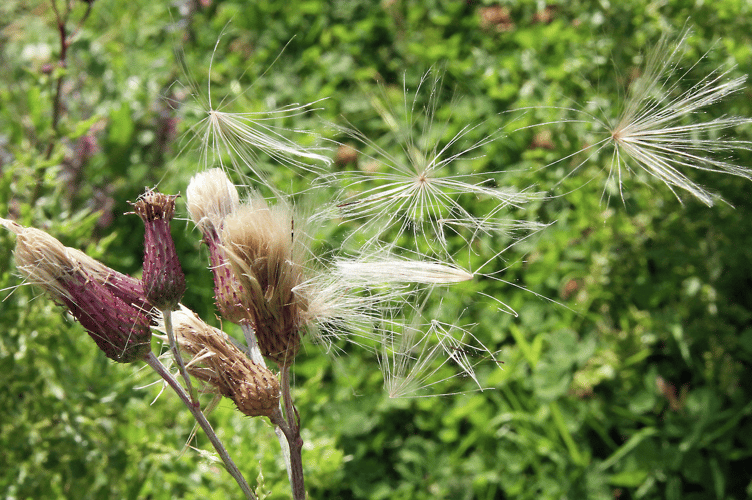
Some hedgerow crane’s-bill were out in bloom on the waste grown. They have five deeply notched pink petals and as with all the crane’s-bills, the flowers are followed by long beak-like seed heads that give the plants their name.
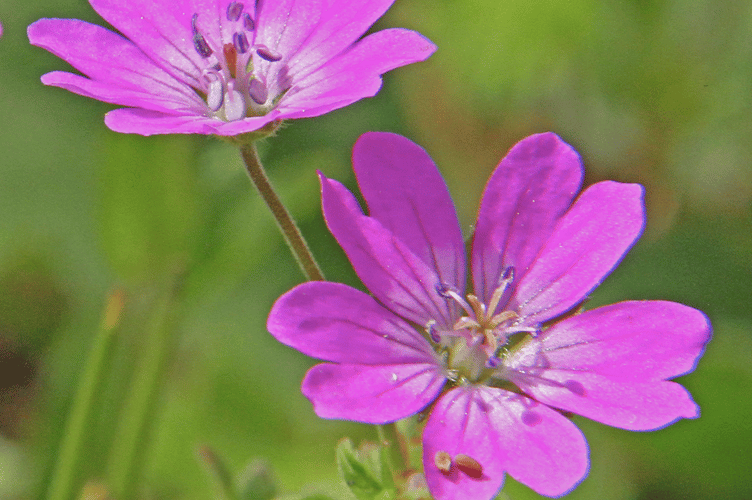
A few metres into the field that has a right-of-way to Bodgara Mill across it, I spotted a solitary blue flower on a tall stem which turned out to be a chicory bloom. Their roasted roots were a coffee substitute and I can remember my parents drinking ‘camp coffee’ when I was a boy as it was cheaper than the real thing.




